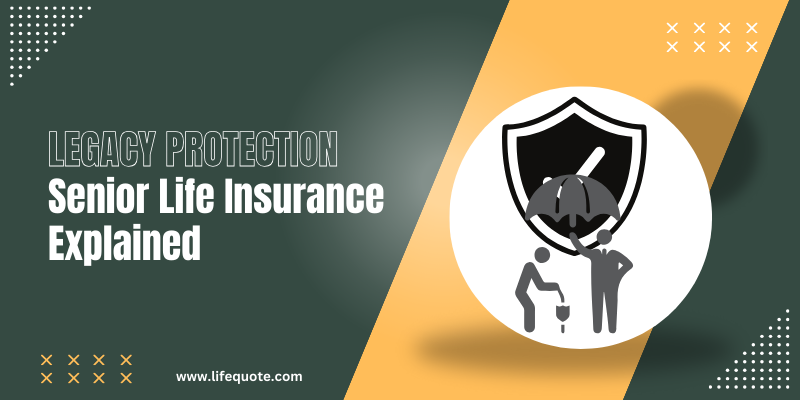- Speak to a licensed sales agent!
- (800) 521-7873
What Are Some Key Insurance Terms That I Should Know?

Understanding insurance terminology is confusing. However, we at LifeQuote believe that life should be easier so does the insurance language. For your easy understanding, we have come up with some key insurance terms that are commonly used in Insurance world.
If the words that you are looking for are not down below, then please visit our Life Insurance Glossary Section where you will find every insurance-related word arranged alphabetically.
Some Key Insurance Terms You Should Be Knowing:
Limited Payment: Cash values, excess interest earnings, and dividends can be used to pay premiums beyond a specified date for Whole Life and Universal Life policies. This is a way to pay for ongoing coverage over a limited number of years. “Limited Payment” is a program design, not an insurance policy feature. A limited payment design is based on a projection of future cash value or dividend growth. The projection is typically based on insurance company current investment experience and assumptions and is more than likely to change over time. If performance is less favorable than expected, additional premium will be required. Insurance companies do not guarantee limited payment designs. LifeQuote makes no representations as to the effectiveness or future success of any limited payment design quotation, projections, or assumptions.
Outlay: The actual cash payment you make to the insurance company for premium payments each year.
Net Cost: Your total payments for a policy less any cash surrender value in your policy, the profit or loss if you canceled the policy at a given date.
Cost Comparison Indexes: There are two types of cost comparison index numbers. Both assume you will live and pay premiums for the next 10 or 20 years. Cost Comparison Indexes are now included in many insurance company proposal ledgers to assist you in evaluating the proposed policy. Indexes take into account the loss of the potential earnings on your money.
The surrender cost comparison index helps you compare costs over a 10 or 20 year period assuming you surrender the policy and take its cash value at the end of the period. It is useful if you consider the level of cash values to be of particular importance to you.
The net cost comparison index helps you compare costs over a 10 or 20 year payment period assuming you will continue to pay premiums on your policy and do not take its cash value. It is useful if your primary concern is the benefits that are to be paid at your death. The two index numbers are the same for a policy without cash values.
Riders: These are added benefits that can be purchased on a policy. Each rider is subject to the specific insurance company´s underwriting guidelines. The terms and conditions governing each rider will be found in the policy. Term Insurance Rider can be added to Whole Life or Universal Life policies as an affordable way to increase death benefits while still enjoying the benefits of a permanent policy. Other popular riders allow for depositing excess premium in a policy to accumulate added cash values or providing a waiver of premiums if you become totally disable before a specified age or to pay additional benefits if you die of accidental causes, or providing affordable benefits for your family. Each rider is subject to the terms and conditions of the company stated in the policy contract.
Long-Term Care Benefits: A special rider or policy offered by some companies will pay long-term or catastrophic health care benefits as a supplemental benefit. These are called living benefit or care riders. Depending upon the policy, benefits may be for nursing home care and/or at home health care.
Accelerated Death Benefits: Also known as “Living Needs Benefits”, provides access to a portion of the death benefit proceeds before death when the person is diagnosed with a terminal illness. This benefit is now automatically included on many affordable term policies. The percentage of the total death benefit that may be eligible to be advanced under this benefit varies by insurance company. Most states now require a specific consumer disclosure be included with every application if the proposed policy carries this benefit. Please read it carefully.
Loans: Universal and Whole Life policies allow you to utilize some of your policy cash value for current needs in the form of a loan. The insurance company will charge a low-interest rate that is often less than current bank rates. You may elect to pay loan interest or to have it deducted from future cash values. Outstanding loan amounts and unpaid loan interest will reduce death benefits and cash surrender values.
Re-Entry: On many term policies, you can qualify for lower future premiums if you submit new evidence of insurability (usually a new medical exam) on the renewal date. Of course, qualification for a lower premium depends upon your insurability. You may be better off purchasing a policy with a more extended level premium guarantee rather than taking the risk that your health may change.
A Rated Life Insurance Policy: This may be the result of having an adverse current or past health history, or may be due to occupation, or hazardous activities. In the event an applicant is offered coverage at a higher rate due to unfavorable information, consumer laws in most states provide the consumer or his physician certain rights of access to this information. A policy owner may apply for a reduction or removal of a rating if the particular condition or activity that caused the rating has changed for the better. Each insurance company has its own rules and requirements for the reconsideration of a rating. There is no guarantee that an insurance company will remove a rating, but it is often worth applying for.
Smoker Status: Insurers will give a lower premium rate to buyers who do not smoke or use tobacco. If you smoked or used any tobacco product in the past, most carriers will consider you a non-smoker if you have not used any tobacco product for one year before applying for coverage. Some insurance companies offer special rates for occasional cigar users and for those who only use smokeless tobacco. If you purchased a policy back when you were a smoker, you can re-apply for a reduced non-smoker rate one year after you have quit using tobacco. Consumers should be aware that nicotine can be detected in a variety of routine screening tests that are now commonly required by most insurance companies. Insurance company guidelines regarding tobacco use and rules regarding reconsideration after you have quit using tobacco vary from company to company and are subject to the company´s current rules and procedures.
Life Insurance Company Ratings: There are five major insurance industry rating services: A.M. Best, Standard & Poor´s, Moody´s, Fitch (formerly Duff & Phelps), and Weiss. These independent services provide information on insurance company financial performance, stability, claims-paying ability, and more. Each rating service has a different set of criteria and may focus on one or more aspects of a company´s financial performance. For more information on the rating services, consumers can contact them directly. Most have websites. The top ratings are: A.M. Best A++; Standard & Poor´s AAA; Moody´s AAA; Fitch AAA; Weiss A+. Generally, LifeQuote recommends companies that carry at least an A+ rating from A.M. Best. Occasionally, an A rated company may be quoted if price and company performance justifies the selection.




